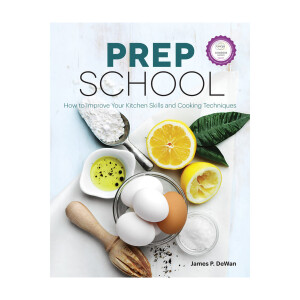
Here are some cooking tips for beginners to help you get started cooking. A beginner might not know the differences between chop suey or chow mein. You might also have trouble identifying what goes in a pan and how to prepare the ingredients. Here are some basic cooking tips that beginners can use. Start with a few basic recipes before you move on to more complex ones. Begin with something simple, and make sure you read all the instructions. Don't throw your chicken breasts in the oven and hope for a miracle.
Start with something small
While it may seem difficult to cook for beginners, it's not impossible. For beginners, it is a good idea to start with a few basic cookbooks. Mark Bittman’s “How to Cook Everything” is an excellent general reference guide. It is also important to have more specific cookbooks like "The silver spoon" for Italian cookery. Cooking for beginners can also be a great way to start cooking whole meals. Begin with something easy and then enjoy the process.
Prepare ingredients
There are many cooking tips for beginners. Although you may not know where to start, every great cook began at the bottom and learned as they went. There are many things to learn when it comes to cooking and it's important to remember that there's a lot of room for improvement. The art of cooking is a wonderful activity. Everyone has the potential to be a great cook, but it can be overwhelming to know where you should start.
Don't put chicken in the skillet.
Do not cook the chicken in the pan if you're new to cooking it. You don't want the chicken to be undercooked. The reason? Chicken needs to be well-seasoned. A large surface area is also necessary for chicken to cook evenly. It should be cooked to 165°F. A meat thermometer is safer and more precise for ensuring the perfect doneness of chicken when it's being cooked.

Preparing the ingredients for cooking
Whether you're a beginner or an experienced chef, the preparation of ingredients is essential. Some ingredients can be used immediately, while others need to be prepared ahead. It is important to roast nuts before you start mixing the dough. These items can be prepared ahead of time, which is a great benefit. Small bowls with a single ounce of weight can be used to separate ingredients and combine them.
FAQ
Is there a better way to learn to make delicious meals?
Cooking is a skill that every person should learn. Cooking is a skill that will allow you to enjoy delicious food. First, find a recipe that appeals to you and then follow it closely. The next step is to practice making small modifications to the recipe until it becomes second nature. Finally, try cooking for others. You will learn a lot and be able to show off your cooking skills.
Is there a better career path for someone who dreams of becoming a chef? What are the best ways to start your career as a chef.
As an apprentice, you can start your journey to becoming a chef. Apprenticeships allow you to work for several years without paying any tuition fees. After you complete your apprenticeship, it is possible to apply for a job as a sous-chef. Sous chefs oversee cooks and help them make salads and desserts. They also oversee the entire operation of the restaurant.
Do I need special equipment to cook?
You don't require any special equipment to learn how to cook. The right tools can make cooking much easier. A knife can be used instead of a fork when making pasta, or a whisk could be used to whip up stiff egg whites. The right tools make cooking easier and faster.
Statistics
- You'll be amazed that over 90% of CIA students receive scholarships and grants to finish their culinary studies. (ischoolconnect.com)
- under 10 Kids have been taught that there is special food just for them, and Fiese says that 10 percent of kids will throw a tantrum if they don't get the food they want. (washingtonpost.com)
- In the United States, the category is estimated at $23.2 billion annually and is growing faster than the market. (washingtonpost.com)
External Links
How To
How to make a perfect omelet
Omelets have always been a favourite food to eat for breakfast. How can you make them perfectly? I've tried many different methods and recipes, but none of them seem to work! So today, I want to share some tips and tricks with you so you can make your own delicious and fluffy omelets every morning.
Before we start making omelets, let's remember that eggs are temperamental. The eggs must be fresh from an organic source and kept at room temperature until they are ready to be cooked. They must be kept cool, otherwise the whites will not form properly and the yolks may become runny. This causes your omelets to look oddly colored. If you plan to cook the eggs right away, it is best to use room temperature eggs.
You might also try separating the egg before adding to the pan. It is important not to allow any white to mix with the yolk as this could lead to the omelet becoming curdled.
If you add the egg directly onto the stovetop, you might end up burning the bottom part of the egg, which would ruin the texture of your omelet. Instead, heat the egg in a microwave for 10 seconds and then place it in a pan. The heat from the microwave cooks the egg just enough without overcooking it.
Let's now talk about mixing eggs. You want to mix the eggs thoroughly before you add them. You can do this by turning the bowl of your mixer upside down. Next, shake the bowl vigorously. By doing this, the egg is thoroughly mixed with the air in the bowl.
Now comes the fun part: adding the milk to your mixture. Mix half of the milk with the eggs. Then fold the eggs in half into the remaining milk. Do not worry if you see streaks of egg; they will disappear when the omelet is flipped.
After you have folded the eggs, heat the oil in a pan over medium heat. Once the oil has started to sizzle, turn the heat down to low. Once the oil starts getting hot, add 1/4 cup of butter to the pan and swirl it around to coat the entire surface of the pan. Next, carefully open the lid and sprinkle salt into your pan. A pinch of salt will prevent your omelet from sticking in the pan.
Cover the pan once you have formed the omelet. Wait for the top to set. Flip the omelet over using a spatula or flip the pan upside down. Cook the other side for another minute or two. Serve immediately after removing the omelet from its pan.
This recipe works best with whole milk, but skimmed milk also works.